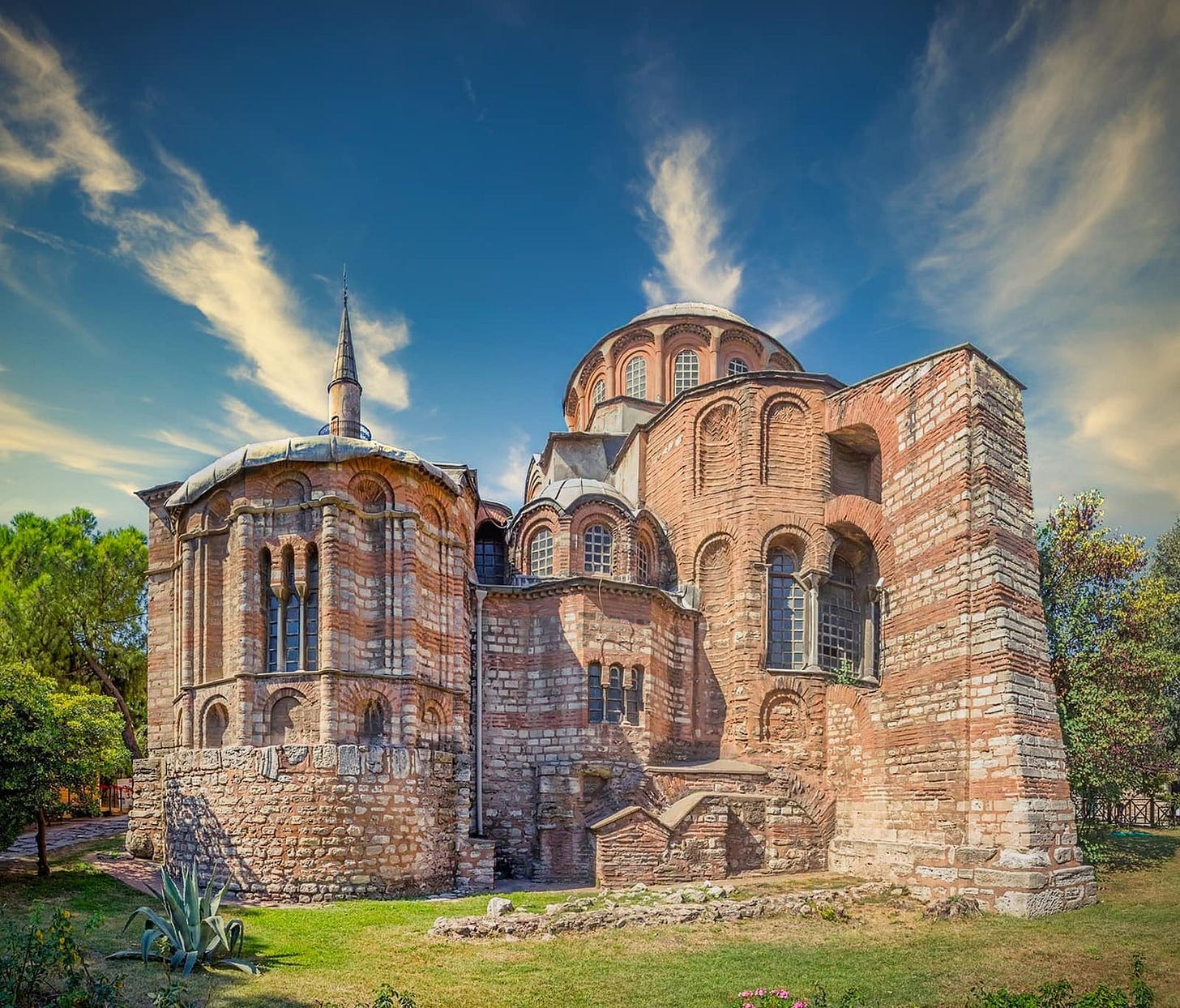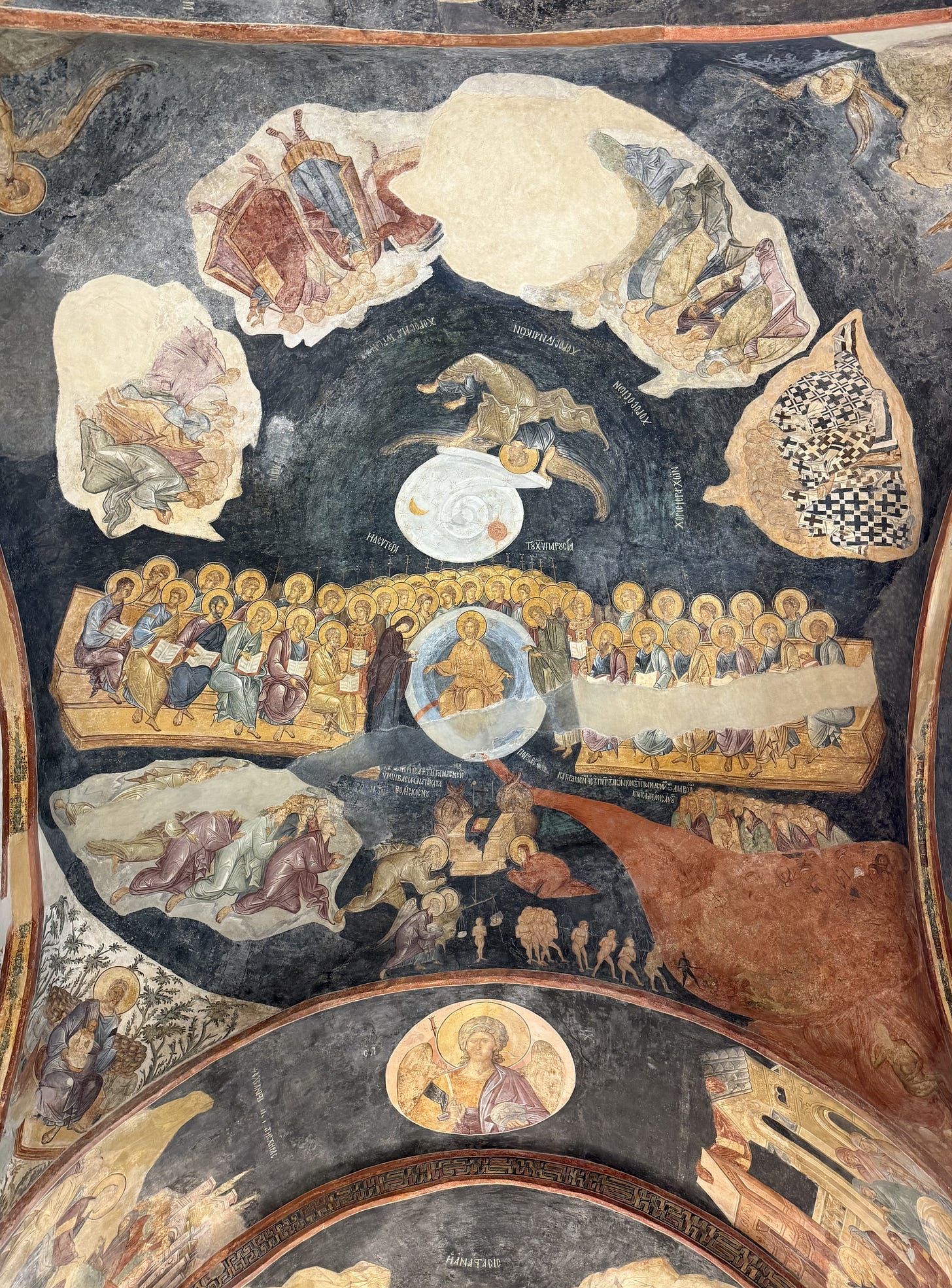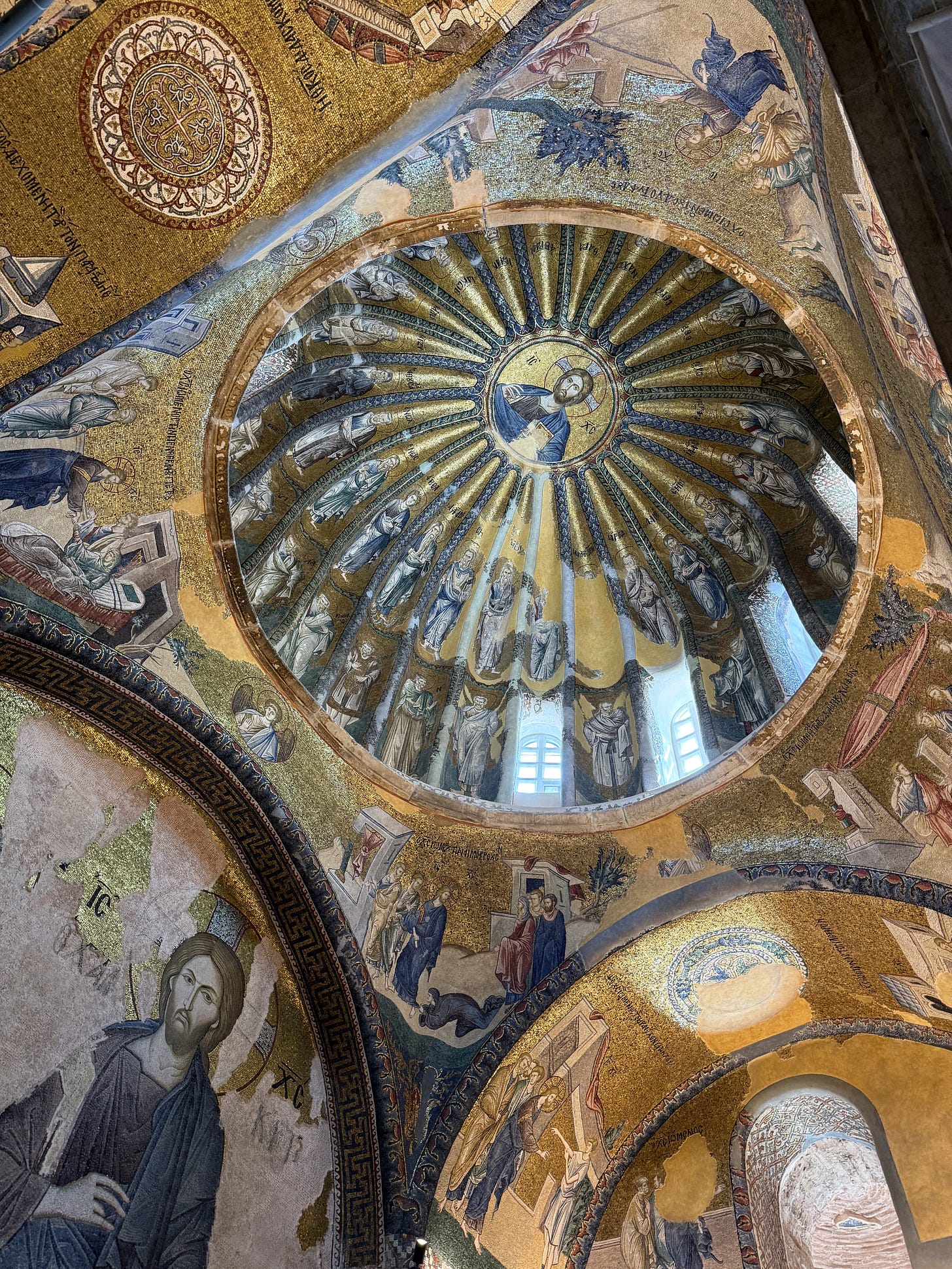Christian Remnants: The Kariye Mosque (Chora Church) in Istanbul
From Byzantine Christian Monastery to Ottoman Mosque
7/24/25: Istanbul
Following a 30-minute ride aboard the Marmaray rail line, along the coast and beneath the Bosphorus, I disembark, clutching my camera. I walk past the turnstiles and an amateur guitarist playing Sezen Aksu, and ride the escalator up into the midday sun. A group of Italian tourists greets me at the exit; they admire the Galata Tower across the channel, murmuring, as I hurry across the street. I hail a cab, one of many looking for tourists at this hour, and settle into the backseat. The smell of cigarette smoke fills my nostrils as we navigate through traffic. At the end of a narrow alleyway beside a family of coiled cats, the tip of a navy minaret reaches up into the sky. I pay my fare—10x what it would have been only 2 years ago—and enter through the gates of what is now the Kariye Mosque, an embodiment of Istanbul’s complex history.
Thanks to my Turkish citizenship, I do not need a ticket to enter—one of only a few places where the passport waives otherwise necessary entry requirements. A security guard, sipping Turkish tea on a stool beside the doorway, waves me by and into the mosque.
History: Past & Present
Despite the existence of conflicting accounts, some drawing generously from legend, the Chora Church was most likely founded by the Eastern Roman General Crispus in the 7th century as a monastery on the outskirts of Constantinople.1 Its name, Chora, means “country,” referring to its location outside the original city walls.
Following years of service and a series of minor repairs, Theodore Metochites, an influential statesman and scholar, sponsored major renovations in the early 14th century. Elaborate mosaics and frescoes were commissioned as part of the overhaul to adorn the walls and ceiling, all depicting biblical narratives and characters typical of the period.
Pictured below is a depiction of the Last Judgment, painted on the ceiling of the church paracelsion, a side mortuary chapel found in early Byzantine churches. Despite the presence of prominent blemishes, the fresco remains an outstanding example of early Byzantine ecclesiastical art. Serving powerful patrons, the Church held an exalted place in the hearts of the imperial family up until the Christian empire’s collapse in 1453.2
Following the Ottoman conquest of the city by Mehmed the Conqueror in the 15th century, the site, along with the rest of the city, entered a new era under Muslim control. Initially, the Chora Church, unscathed by the Ottoman Siege, was left to the Greek community’s Patriarchate and remained a place of Christian worship.3 Nevertheless, in 1511, following in the footsteps of the Hagia Sophia, the Chora church was converted into a mosque.
The site’s new muslim custodians constructed a minaret and mihrab4 to suit Islamic worship. Rather than destroying the artwork, during the conversion process, the Ottomans opted instead to cover the mosaics and frescoes, allowing for their preservation. A combination of thin layers of removable plaster and wooden curtains was used to hide the figural depictions during prayer. Shortly after the modifications, the mosque became a hub for the local Muslim community, which had previously lacked sufficient space to pray.
Politically, the conversion symbolized the Ottoman effort to incorporate Byzantine heritage into the empire's cultural fabric following their conquest of a powerful Christian capital. Acutely aware of the Church’s historical and artistic value, the Ottomans not only chose not to eliminate the remnants of their predecessors but also ensured that the structure formed part of the empire’s cultural inheritance for generations to come. It is the Ottoman principle of religious tolerance that made my visit to the Kariye Mosque and appreciation of its figural adornments possible, centuries after their creation.
Conclusion
The Kariye Mosque's fusion of Christian and Muslim architectural elements embodies Istanbul's role as a bridge between East and West; a UNESCO World Heritage site since 1985, the Mosque is well worth a visit.
Now, having finished my own, I look out over the Bosphorus and watch the ferries glide by as the recording of the adhan begins to play from crackly loudspeakers mounted on the Kariye minaret. Through endless wars, conversions, and natural disasters, prayer atop this hill has endured in one of its many forms for centuries. Looking to the future, I hope that worship here will continue for centuries hereafter.
“Kariye Mosque: Monastery of Christ at Chora” The Byzantine Legacy, accessed July 27, 2025, https://www.thebyzantinelegacy.com/chora#:~:text=The%20early%20history%20of%20Chora,9th%20centuries%2C%20with%20the%20iconodule.
Ibid
“History” Kariye Mosque, accessed July 27, 2025, https://en.kariyecamii.com/.
A prayer niche indicating the direction of Mecca






